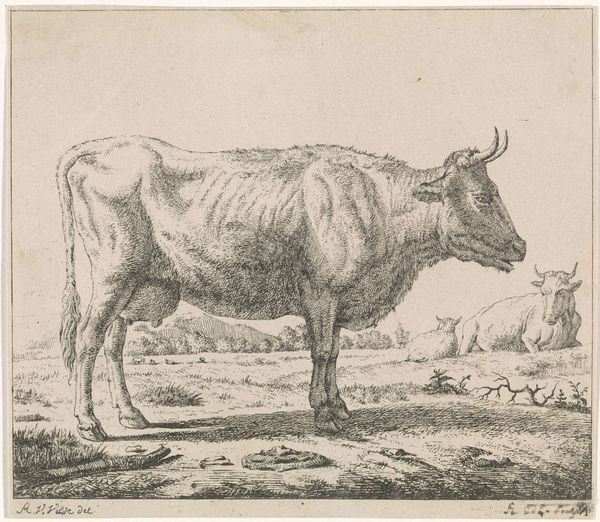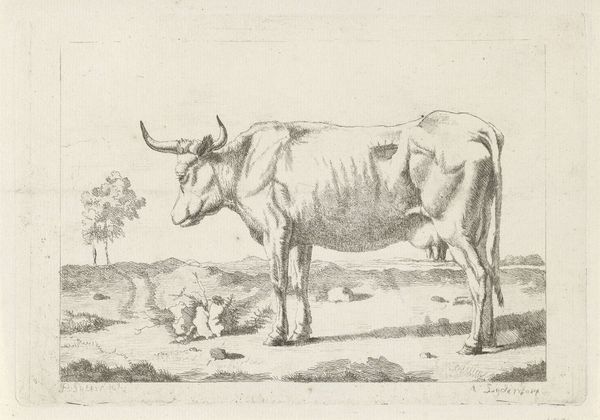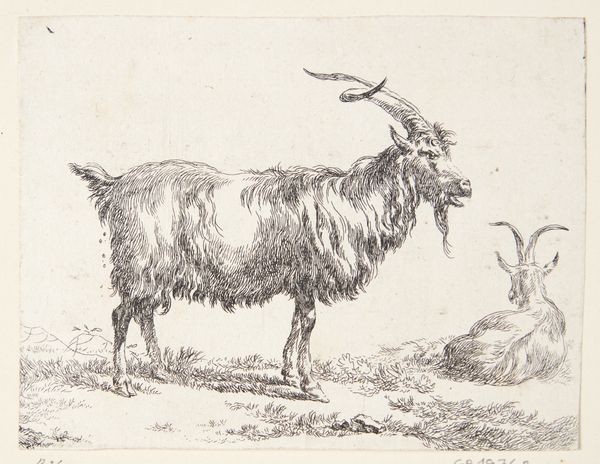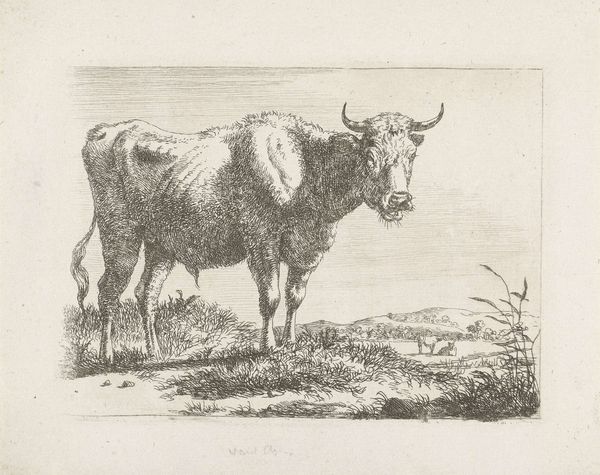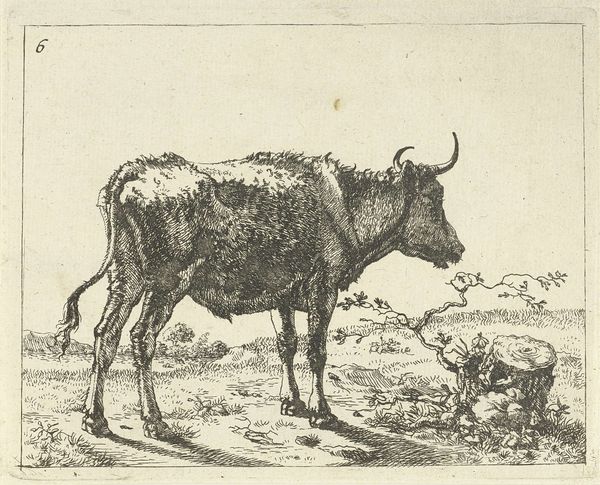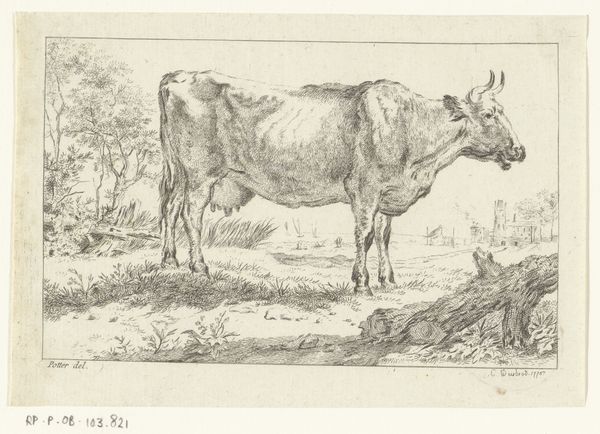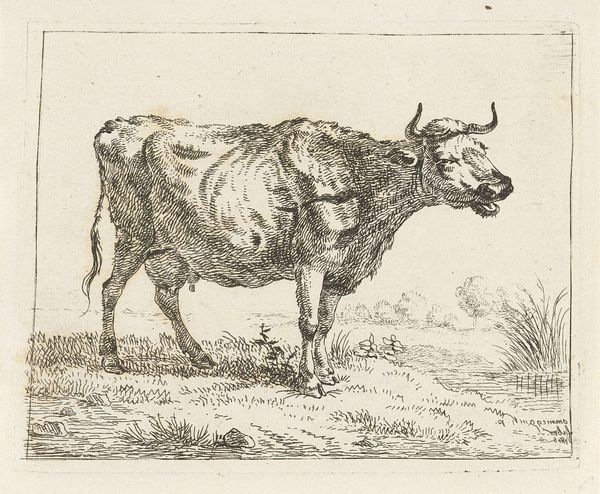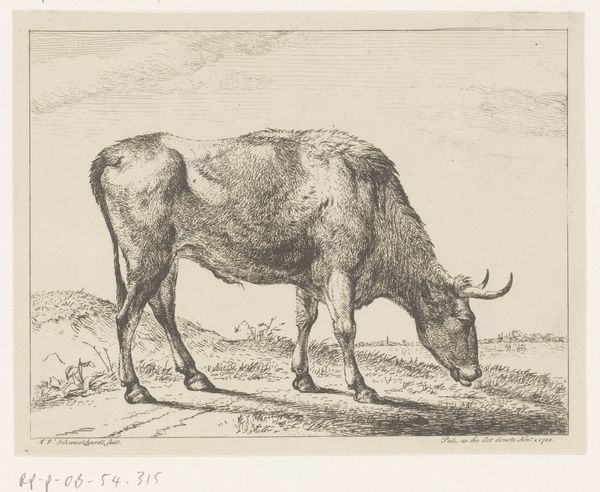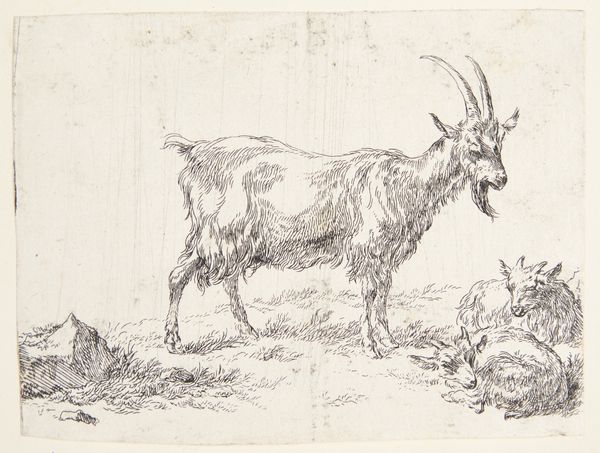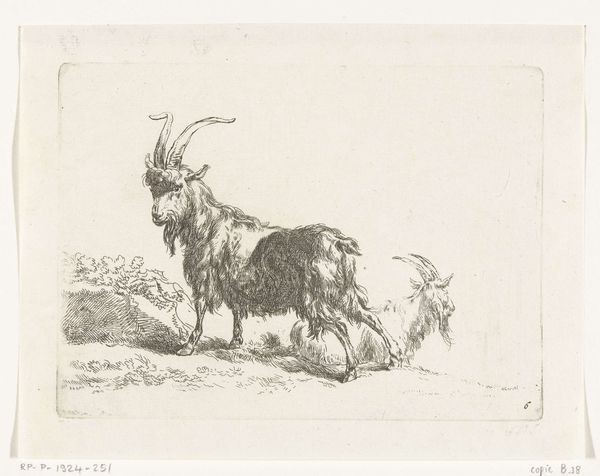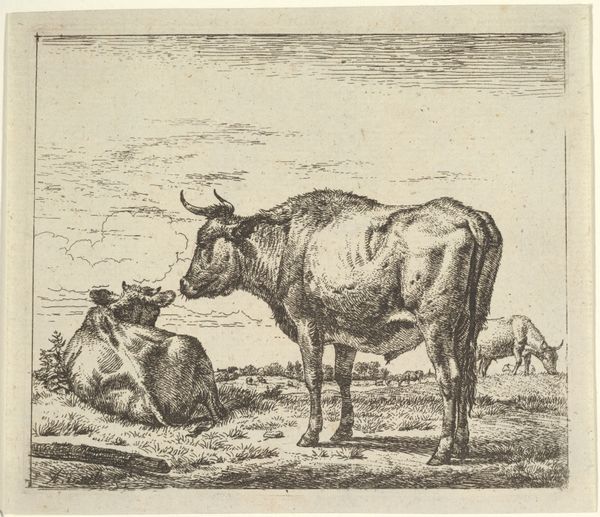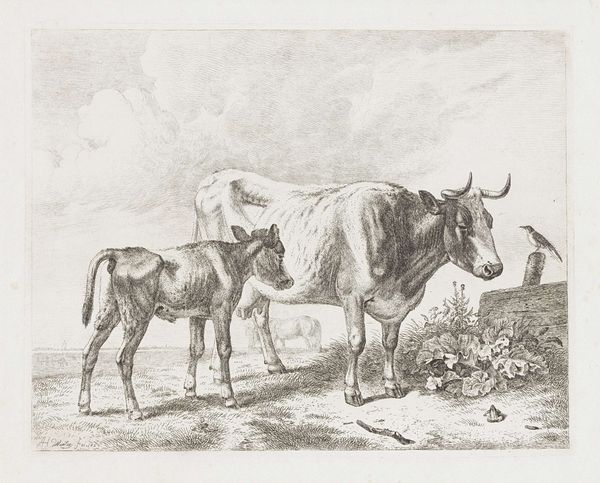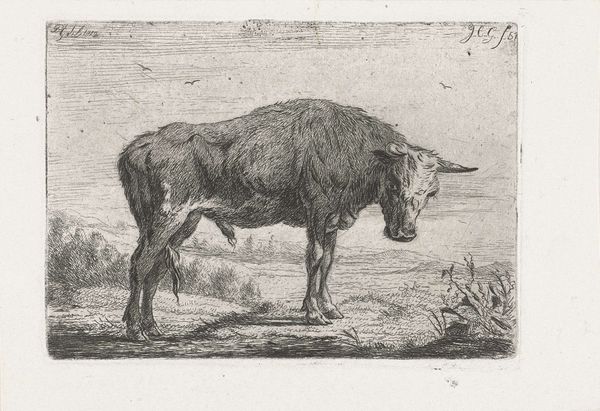
print, engraving
#
baroque
#
animal
# print
#
old engraving style
#
landscape
#
engraving
#
realism
Dimensions: height 160 mm, width 211 mm
Copyright: Rijks Museum: Open Domain
This is "Geit," or "Goat," an etching made by Frederick Bloemaert sometime in the 17th century, now held at the Rijksmuseum. Bloemaert, working in the Dutch Golden Age, made many prints of animals, often in pastoral settings. In this etching, we see a male goat standing proudly in the foreground, set against an idyllic landscape. It's a celebration of rural life, a theme common in Dutch art of this period. But it also speaks to broader issues of class and identity. Bloemaert, coming from a privileged background, romanticizes the countryside, offering a view of peasant life that's filtered through a lens of wealth and comfort. The goat itself, a symbol of virility and rustic simplicity, becomes a stand-in for an idealized version of the working class. There’s a tension here between the real and the imagined, between the artist's lived experience and the narratives he constructs. It invites us to consider the power dynamics inherent in representation, and to reflect on whose stories get told, and how.
Comments
No comments
Be the first to comment and join the conversation on the ultimate creative platform.
